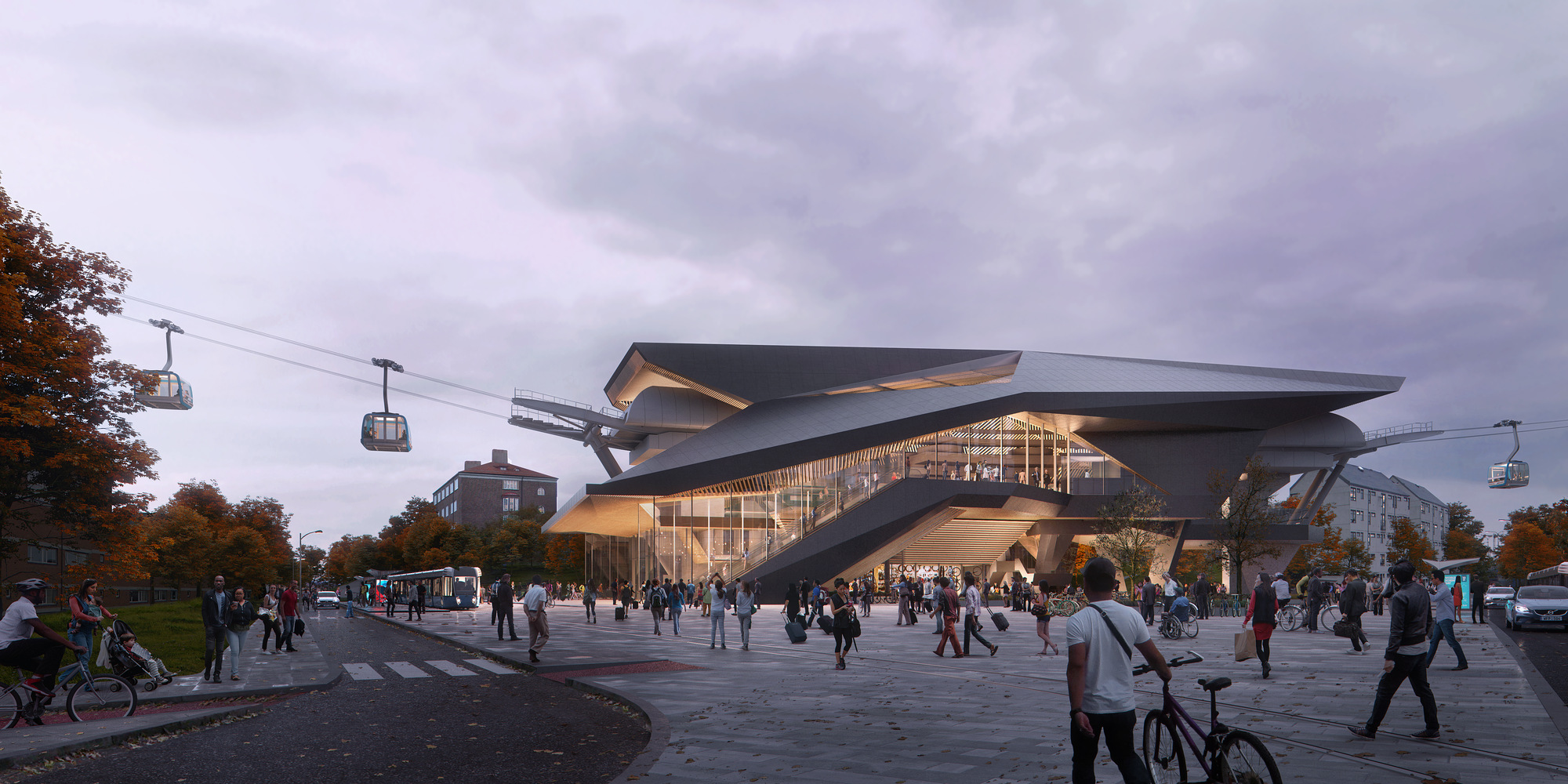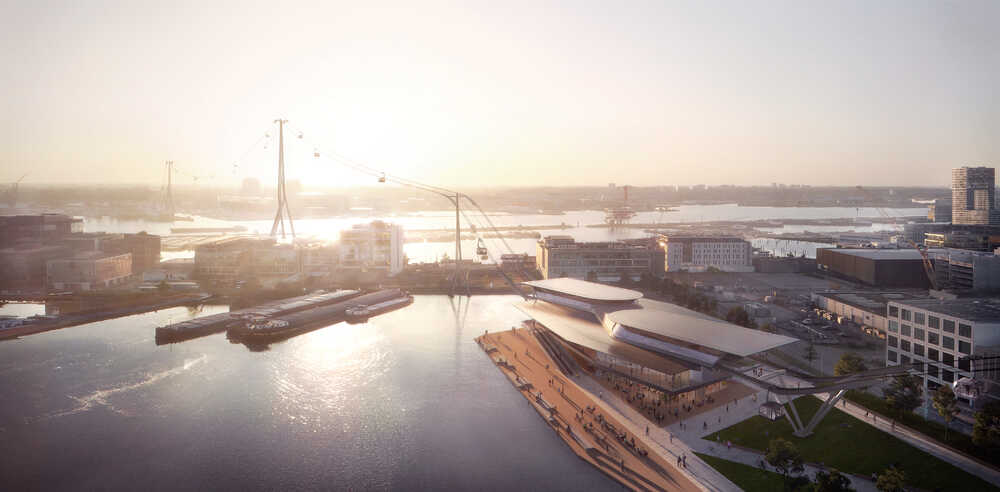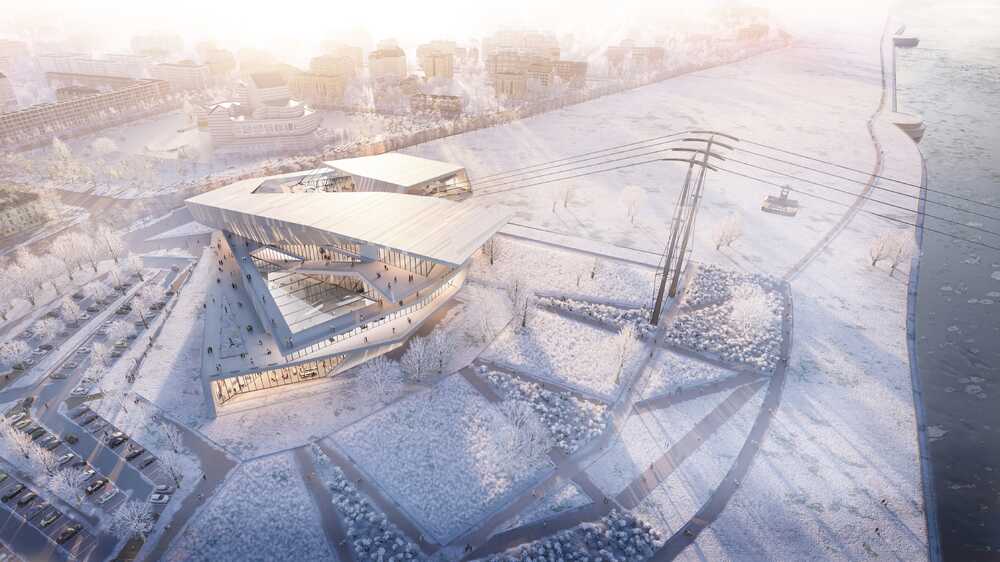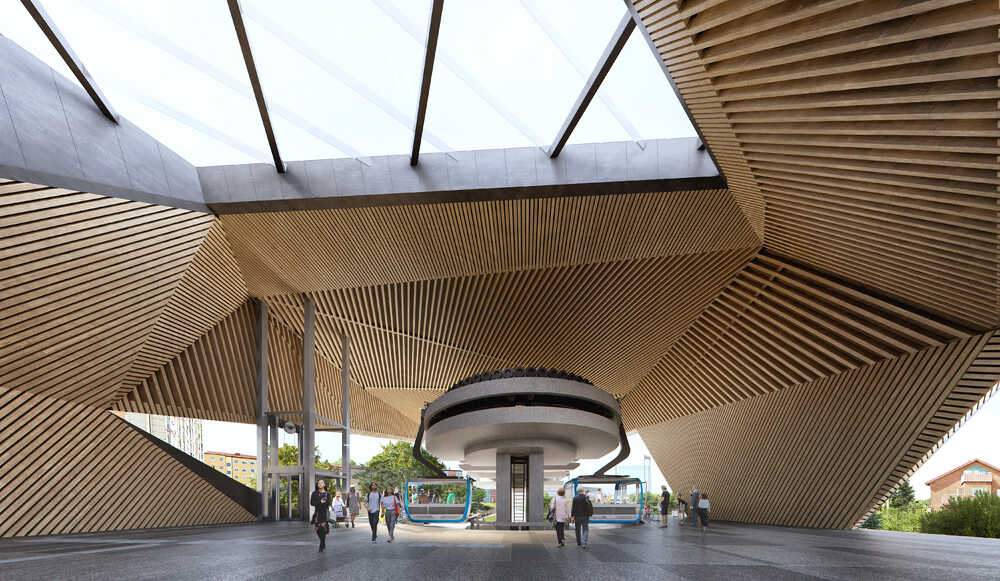As cities consider how to get people moving again post-corona – in healthier, more sustainable ways, urban cable cars present a viable option that can be integrated into existing public transport networks.
In 1874, Andrew Hallidie invented the world’s first cable car transportation system, to help move goods and people more efficiently up the steep hills of San Francisco. After the turn of the century, as buses, metros and cars became more widely used in urban environments, cable cars were largely relegated to mountain and alpine settings.
But in recent decades, their benefits as fast, sustainable and relatively cheap public transport has seen a rise in urban cable cars. One of the most famous examples is in the city of Medellin, nestled in a valley in the north-west of Columbia. Its commuter cable car, which opened in 2004, helped enhance the mobility of more than 150,000 people living in marginalized communities in the hills around the metropolis.
Now, as cities look at ways to approach mobility post-corona, cable cars present viable public transport options, enhancing connectivity while simultaneously helping to create healthier cities by reducing both congestion and CO2 emissions.
“A cable car is an extremely sustainable public transport system. It is a very fast and green way of travelling, which is attractive for cyclists, commuters, students, residents and visitors,” explains Ben van Berkel, UNStudio’s founder and principal architect. “Although primarily a pragmatic solution, cable cars are also a very congenial way to travel, as they enable city residents to see and experience their cities in a whole new way."
Traversing the city ‘as the crow flies’ and bypassing traffic congestion below, travelling by cable car is significantly faster than other forms of above-ground public transport. Additionally, these systems provide an efficient solution for connecting areas divided by waterways or under-serviced by other forms of public transport.
Their speed of construction is also much faster than other alternatives. As a comparison, installing tramlines can take up to five years, whereas a cable car is often around two years. Once complete, their levels of noise pollution are also low.
Moreover, these aerial tramways require less land than other public transport systems; similar to metro networks, the stations are the only element that require space within the city fabric, thus causing little interruption to existing networks.
In recent years, UNStudio has designed a number of cable cars for cities around the world. Below, get to know each project.
IJbaan Cable Car, the Netherlands
Fast, green, flexible and future-proof public transport connection between two residential areas
The IJbaan Cable Car will be Amsterdam’s fast, green and future-proof public transport connection between two growing residential areas: Amsterdam-West and Amsterdam-Noord / NDSM.
Commissioned by the IJbaan Foundation (Stichting IJbaan), the project is the result of a grassroots citizens' initiative, which spawned from a highly popular crowdfunding campaign launched by Bas Dekker and Willem Wessels in 2015.
The overall goal of the project, which is also supported by the Municipality of Amsterdam, is to create a new connection across the IJ waterway by Amsterdam’s 750th anniversary in 2025.
The design for this 1.5-km cable car consists of three slender pylons and two stations (NDSM Marina on the North Bank and Minervahaven to the South), but can be expanded in the future to include a third terminal, depending on growth and need.
It’s three slender towers will also allow the dense urban area of Amsterdam to expand, while also varying in height to allow for ships to pass and still being fully in line with the Dutch capital’s UNESCO World Heritage requirements.
The stations are not only designed as transport hubs for pedestrians, cyclists and public transport streams to come together, but also as destinations in themselves serving their local communities as meeting places, cultural centres and dining and retail spots.
In total, a journey along the full route will take 4.6 minutes to complete at an average speed of 21.6km/h. Each passenger cabin will have a capacity of 32-37 passengers, with additional bicycle cabins with space for 4-6 bikes.
Find out more about the project here.
Blagoveshchensk Cable Car Terminal, Russia
A historical and cultural connection between two nations
The Blagoveshchensk Cable Car will be the world’s first cross-border cable car, linking Blagoveshchesnk in Russia with Heihe in China.
Since the 19th century, the two cities have used the Amur River that divides them as a route for trade, commerce, social connection and a growing relationship between them.
The cable car project will be an expression of the historical connection between these two cities, and our winning design for the Blagoveshchensk terminal aims to support this.
The building takes this connection as inspiration for the organisation of programmes, materialisation, spatial quality and curated views. Its shape also makes maximum use of the rooftop, creating a space to greet and farewell passengers, as well as an elevated urban park where art and sculptures can be displayed overlooking the whole of the Golden Mile river-scape.
Find out more about the project here.
Gothenburg Cable Car, Sweden
Sustainability and environmental impacts as key elements
UNStudio’s design for the Gothenburg Cable Car was a 3km-long route featuring four stations and six towers spread across one line. The specific position of the route was chosen to provide the shortest and fastest connections between the old city in the south and the neighbourhoods north across the Gota river.
The route was also designed as an integrated solution, linking to a bus and tram transfer node in the existing public transport network.
The most visually apparent element of the cable car is its towers, which were designed to be highly visible landmarks that would also define a new skyline for this Swedish city. The towers are inspired (and reference) the steady motion of Gothenburg’s famous shipyard cranes, and are designed to be as light and transparent as possible.
While each station would be unique, they would feature a strong cohesive visual identity to make them clearly recognisable as part of the same system. Designed around principles of natural wayfinding and social safety, they would also become destination points within the city.
Find out more about the design here.
(The project was undertaken by the City of Gothenburg to mark its 400th anniversary in 2021, but after budget constraints arose, decided to not go ahead with the cable car system.)
UPCOMING WEBINAR: Join us on November 24 for a webinar on the future of urban and regional transport, focusing on cable cars, rail stations and hyperloops.
It's the second in our two-part series looking at the future of mobility. The first will take place on November 3, looking at airports and the future of long-distance transport.
Find out more and register your spot here.




